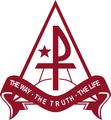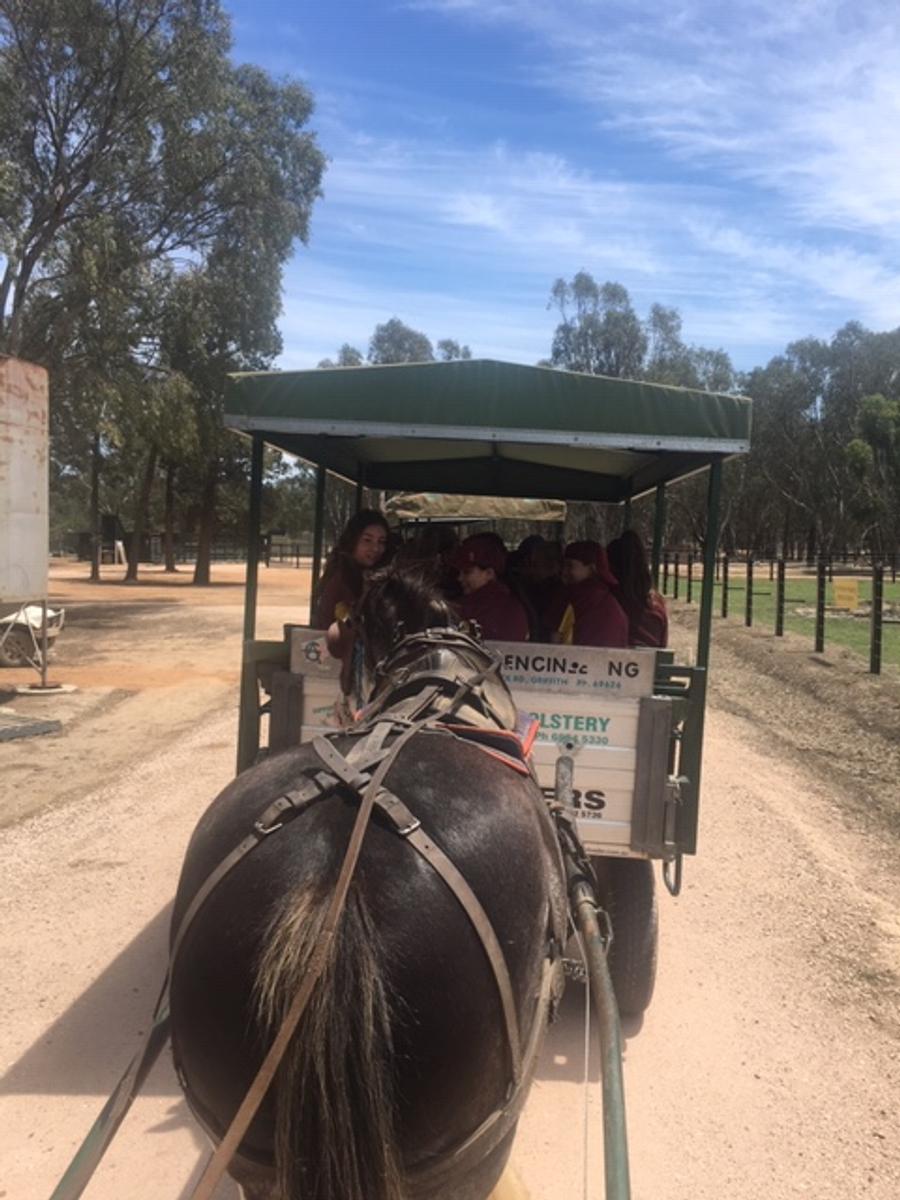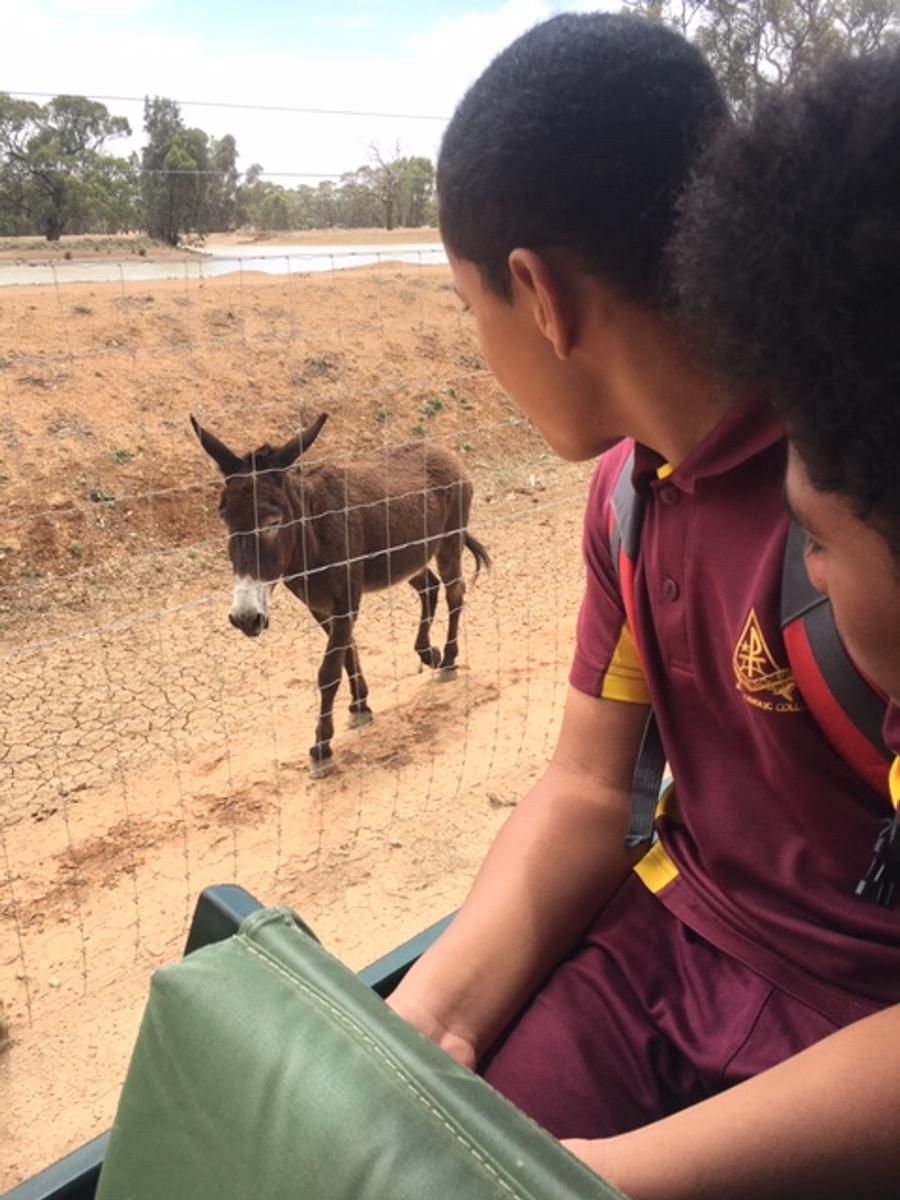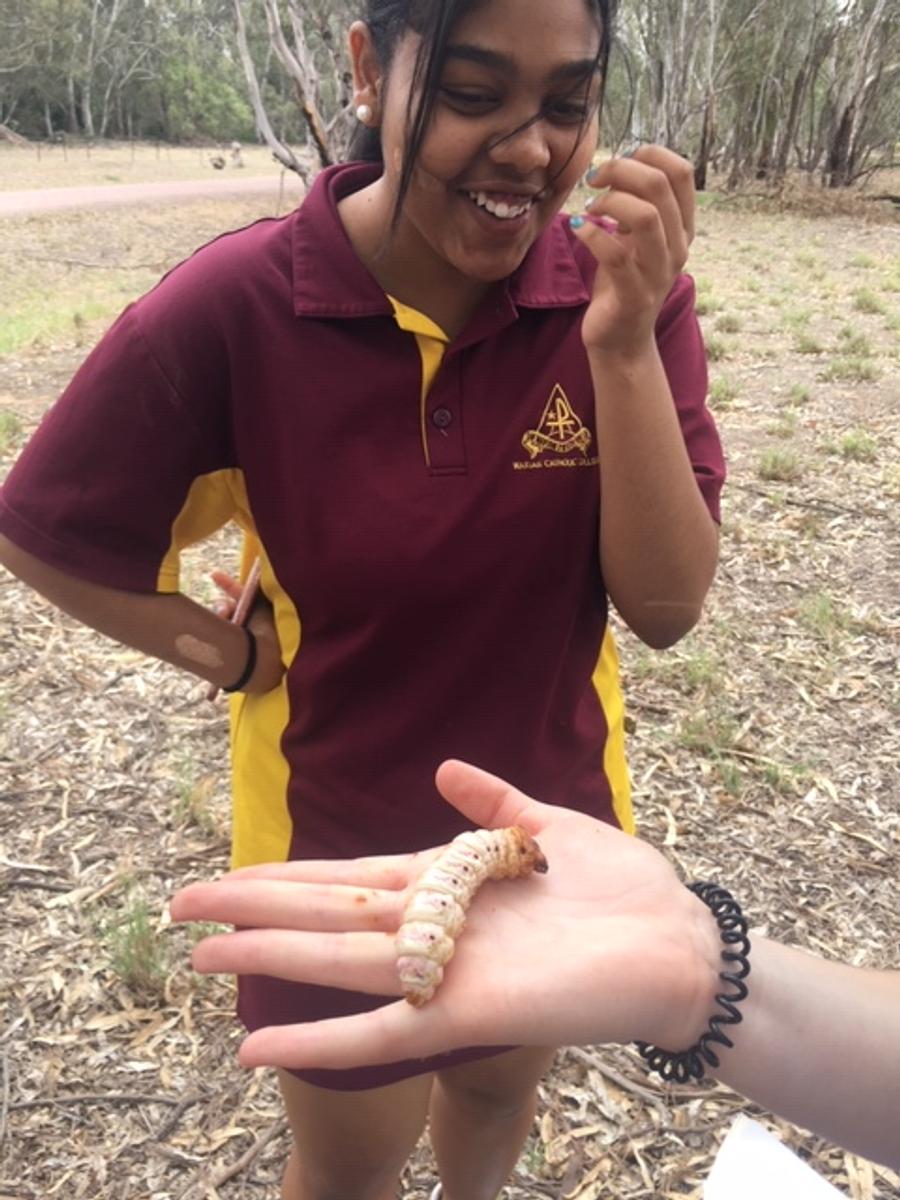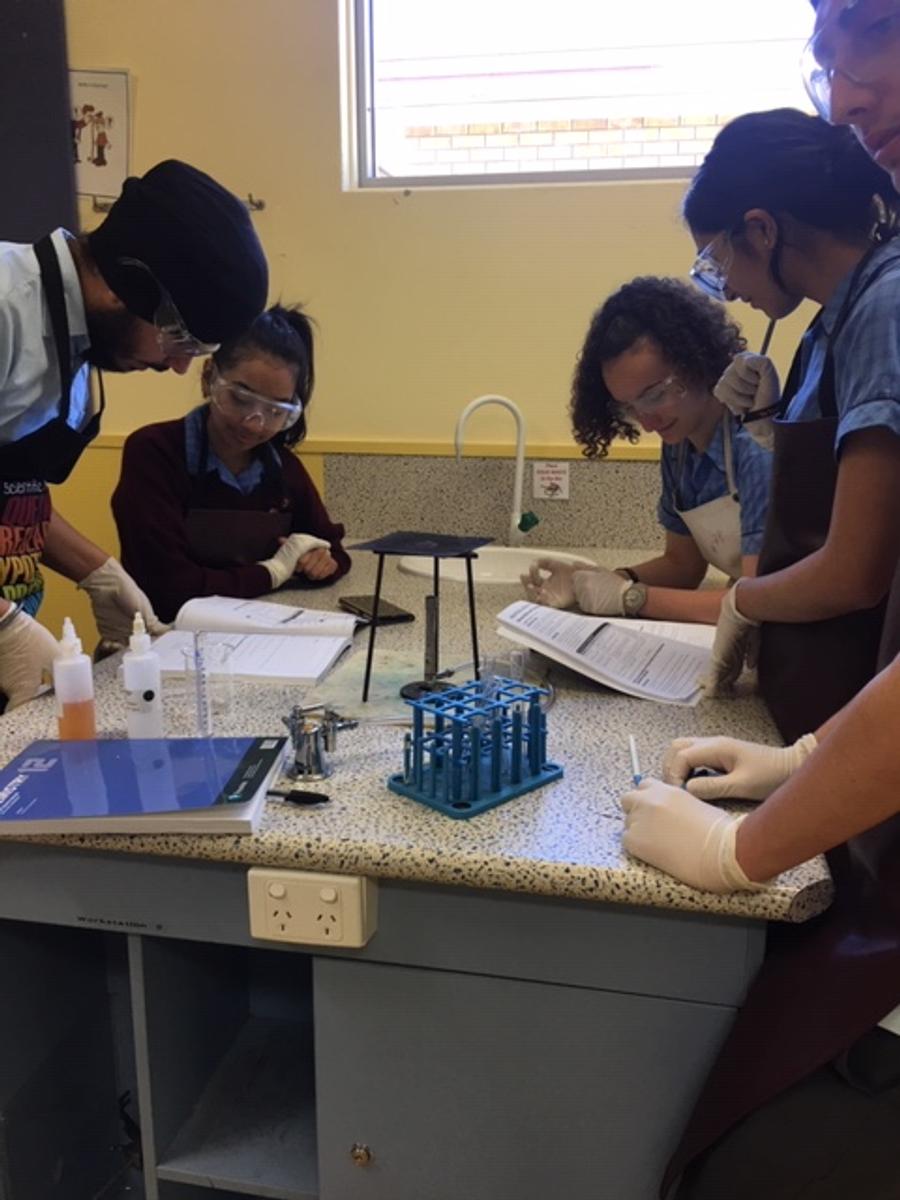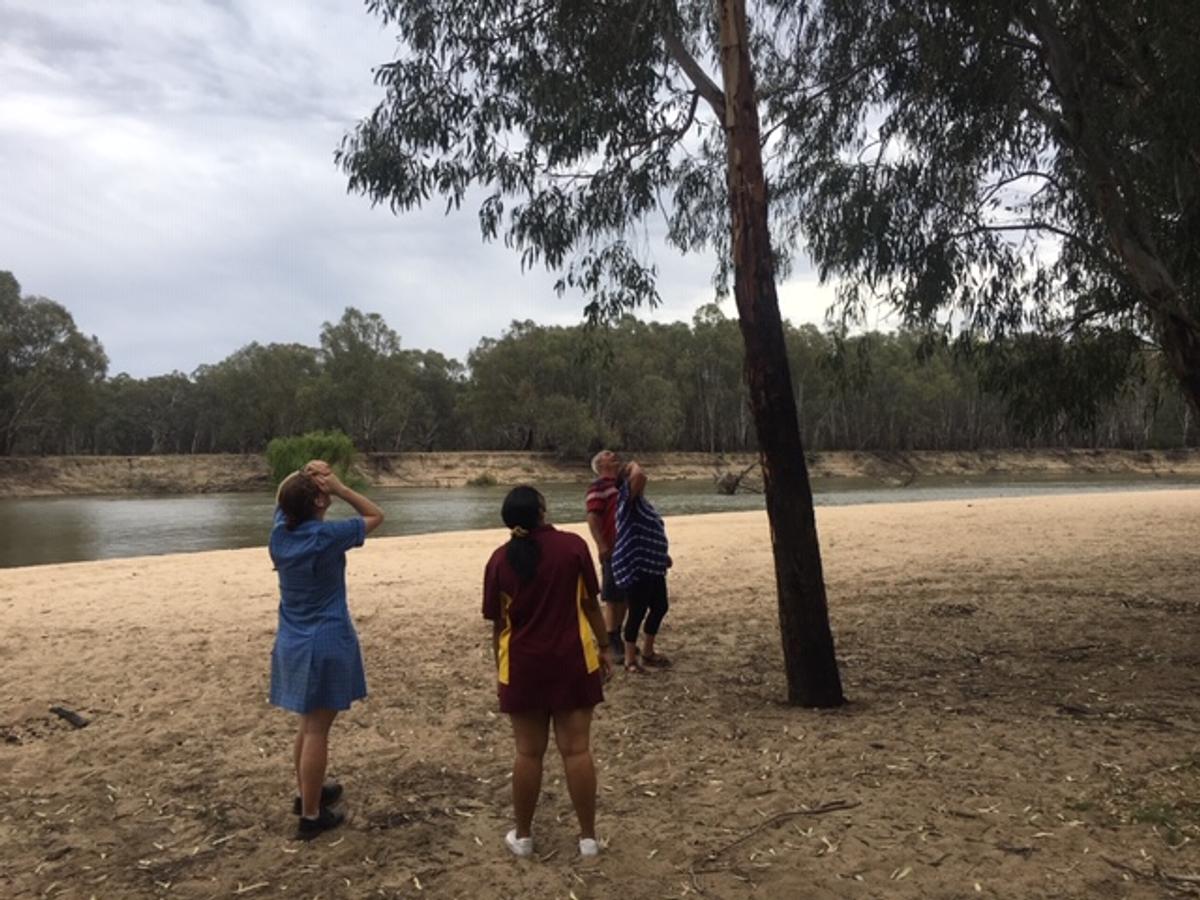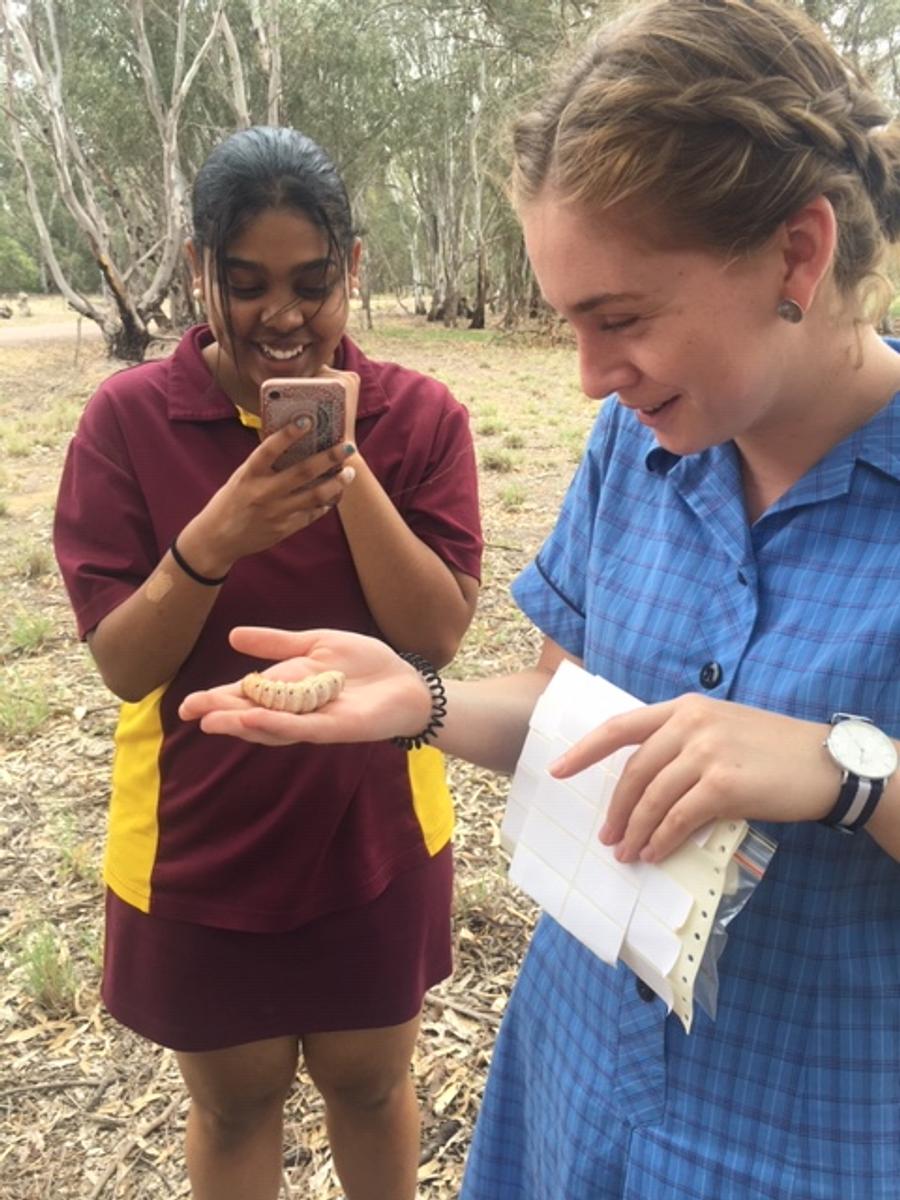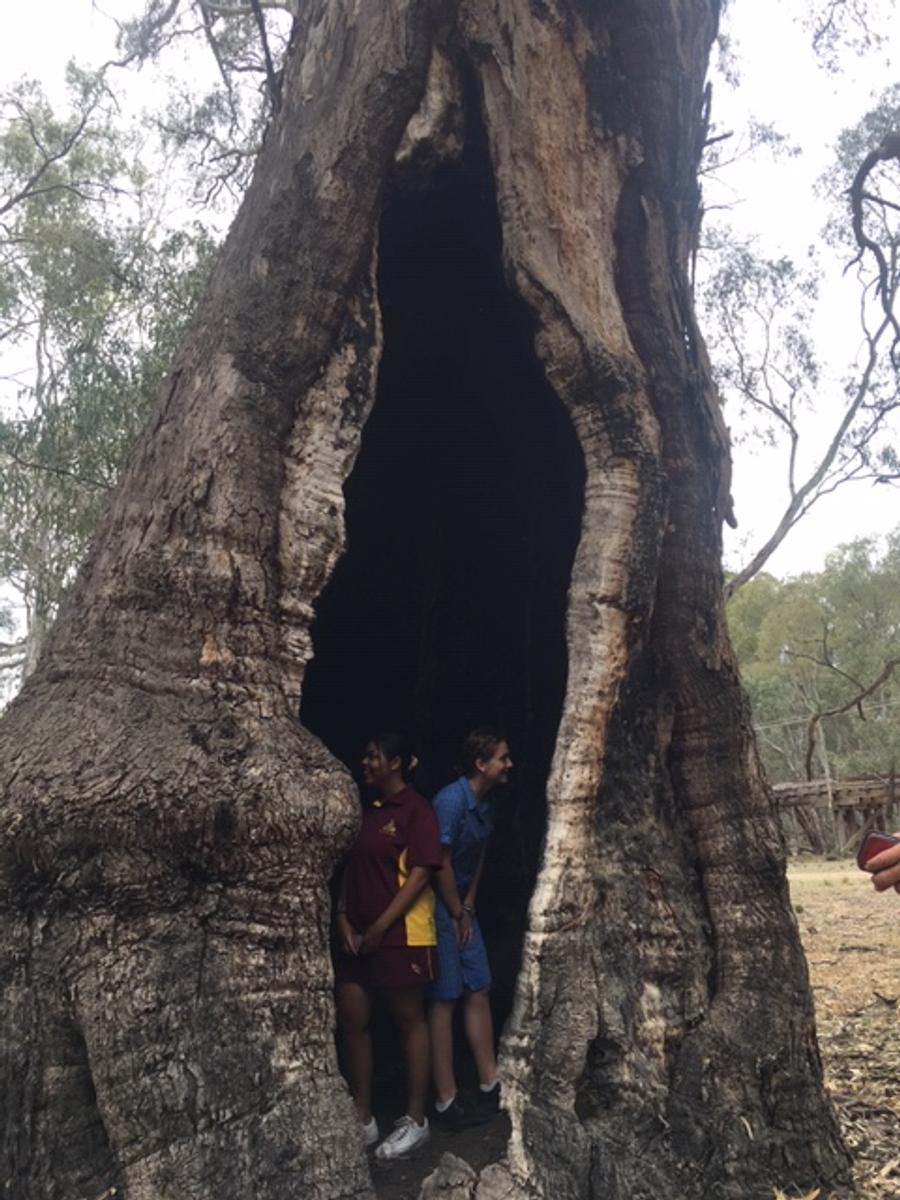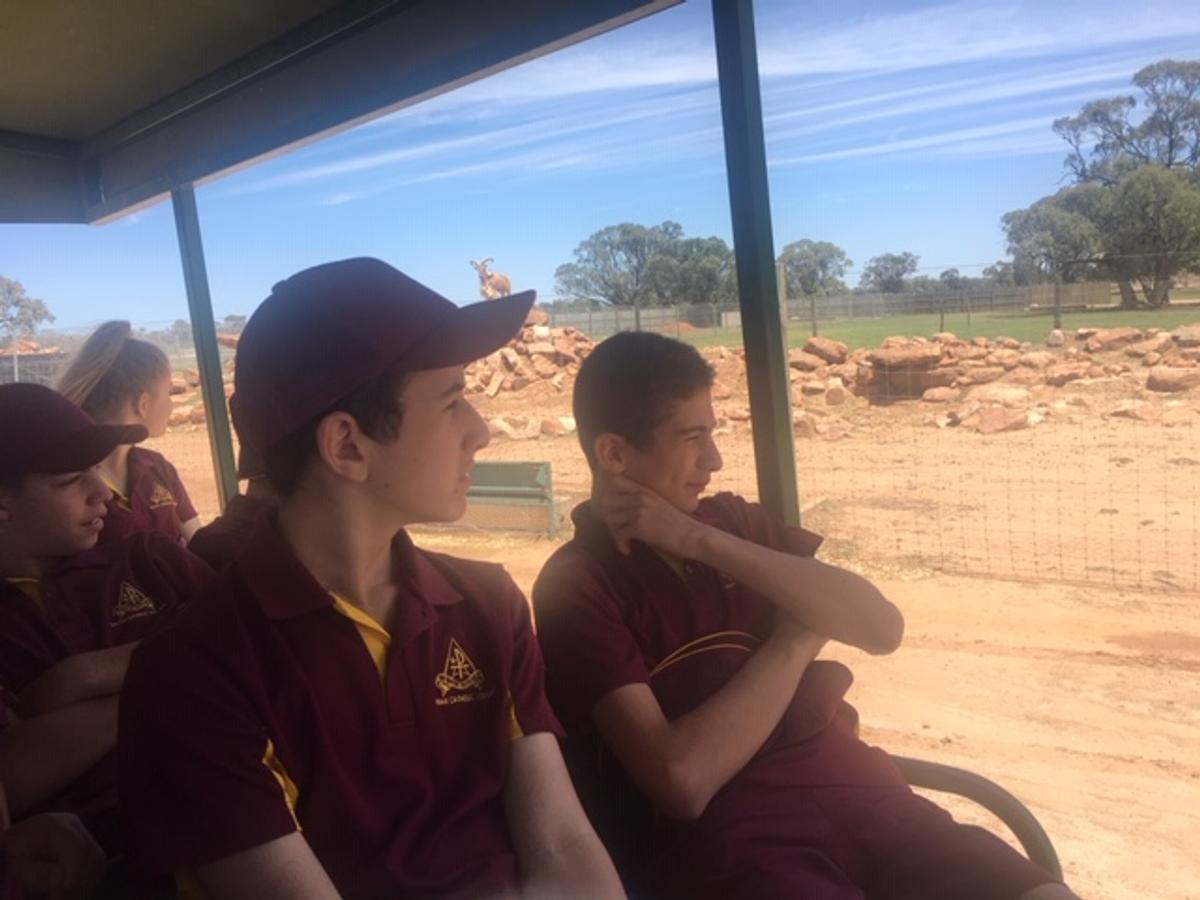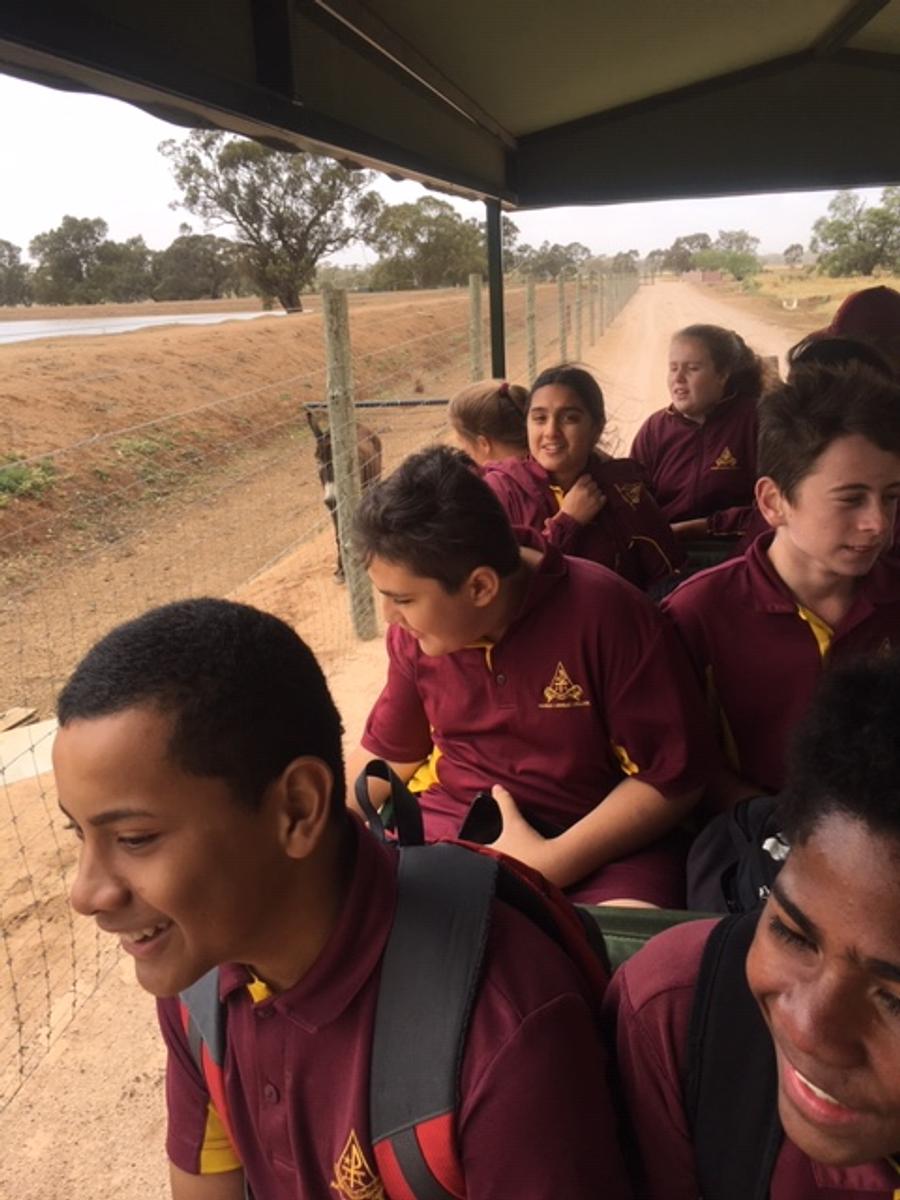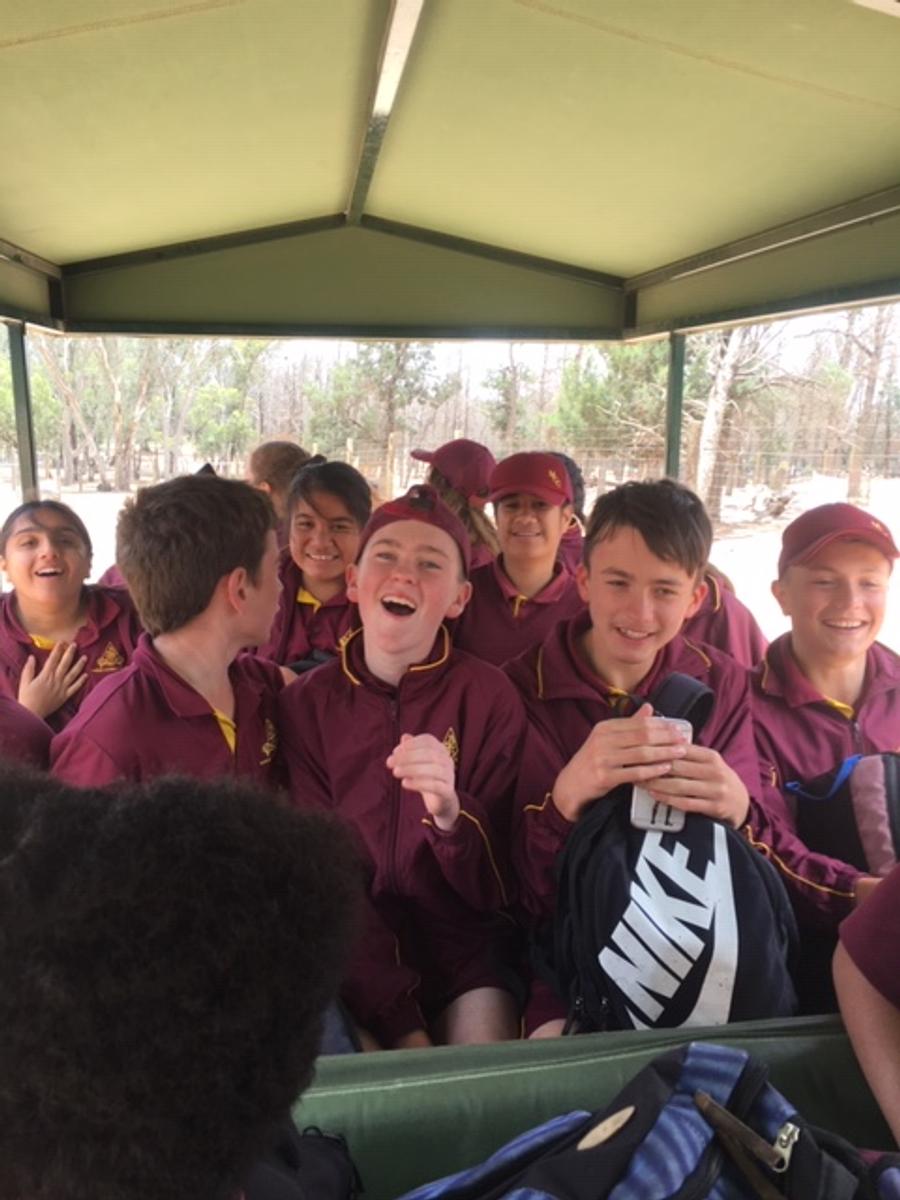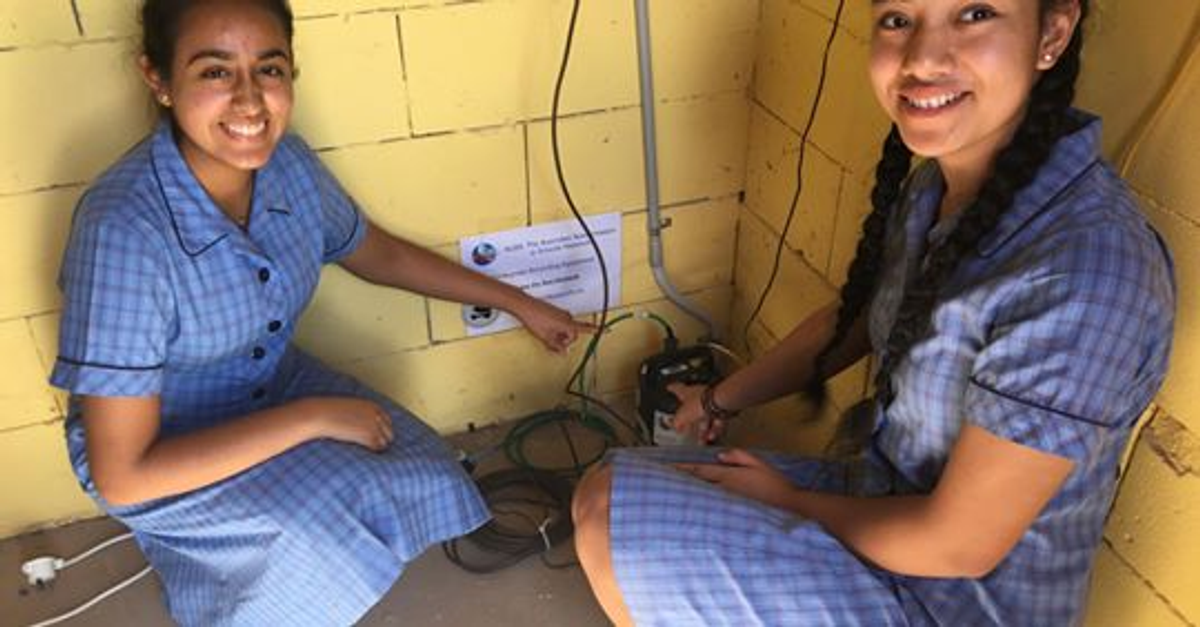Science News
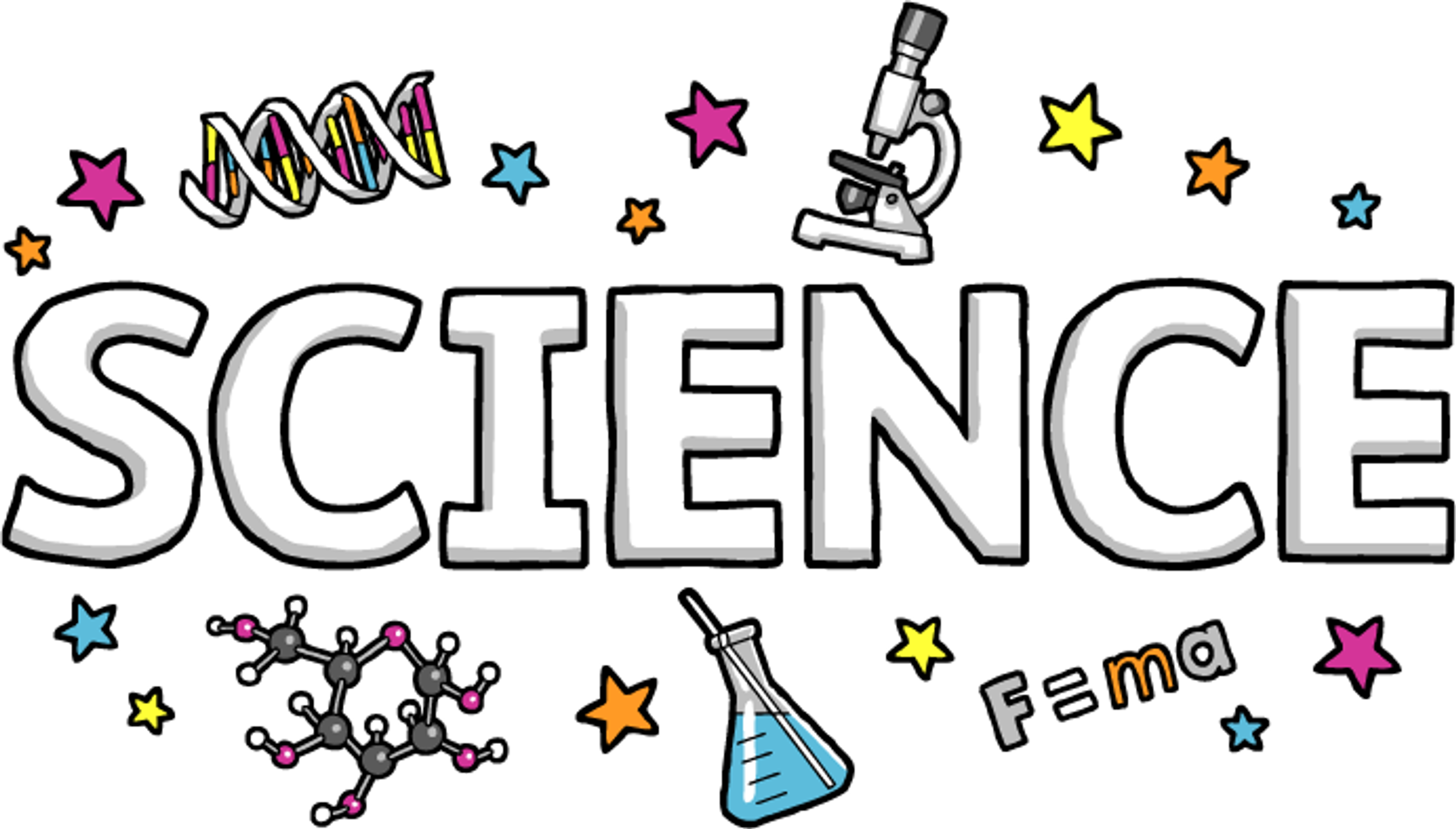
We are all at the end of a very busy year and the science students have had an exciting month. The Year 7 had their excursion to Altina Wildlife Park to observe animals from many different habitats. They have been studying how scientists organise and classify living things according to their characteristics and what better way to learn science than to go out into the field and observe the variety and the characteristics that Atina offers. We certainly experience a blistery and cold environment on Thursday when it was raining, windy and very uncomfortable. While some animals had the sense to stay indoors, the peacocks took advantage and showed their colours to attract the female peacocks inside the crocodile enclosure. This had the full attention of some students but luckily, while the crocodile had its eyes fixed on the birds, the gate was closed, so the birds were safe. Apparently, they haven’t always been so lucky nor aware of the open gate!
The latest news from Altina is that they have had 82 baby animals born and many of these are for endangered species. Well Done, Altina.
The Year 12 Extension Science class had an excursion this week to Narrandera, accompanied by our Aboriginal Student and Community Worker, Lorelei Wray. They were given a tour and a very informative talk about the bush medicines from native plants by Uncle Michael, a Wiradjuri Elder.
We were very privileged this week to have Dr. Michelle Salmon and her assistant, Sima Mousavi, visiting us from the Australian National University and Geoscience Australia. Dr Salmon spoke to Year 7, Year 9 and Year 12 students after she installed our very own seismometer. It is very exciting to watch the wave activity on the earth around us being collected and then watching the instantaneous visual display. Thanks go to Miss Denise Depaoli for her efforts organising this for the students to enjoy and be informed. Miss Depaoli will be joining the science staff for 2019. She is currently working on a NerdyDerby motion track, so many more exciting things to come.
We are very sad to bid Mr. Chowdhury farewell from the Science Department. He has given many years of service to the education of our Marian students. As a colleague, he has been always generous and has contributed many great ideas to improve our practice. We wish Mr. Chowdhury the very best as he joins his family in Sydney and takes up a new position as a senior teacher of Chemistry and Biology.
I would like to take this opportunity to thank Mrs. McIntosh for her continued support and hard work behind the scene keeping the practicals organised, supplies available, and a safe and clean space for our work. We wish her and her family, a very happy Christmas.
The science teachers have done an amazing job delivering quality lessons and helping your children build their brains and expertise. Next year, the student in Years 9 and 10 will have a subscription to Education Perfect and we hope parents will keep supporting the use of this valuable learning resource. Homework will be set so that good study practices can be developed for learning and students become mature, informed citizens as they progress to the senior years. Years 9 and 10 are critical for success in Year 12, as an estimated 70% of skills for the HSC are acquired by Year 10.
We invite you to watch for the meteorite shower tonight which peaks at 11:30pm when 2 shooting stars, meteorites per minute will hit the Earth. Should be a spectacular display.
On behalf of the science staff, I wish you all a very happy and Holy Christmas. Keep safe over the holiday break
Best wishes
Esther Dumbleton (Science Leader of Learning)
The Australian Seismometers in Schools Project
The Australian Seismometers in Schools project (AuSIS) is an outreach program and Marian Catholic College Griffith is the 59th school in Australia, first in the Riverina, to have a research quality broadband seismometer installed. The goal of the program is to raise awareness of geoscience through observing our dynamic earth in motion. Students are required to look after their own seismometer and in doing so be a part of a national science experiment. The Australian Seismometers in Schools project aims to:
- Raise community awareness of regional earthquakes;
- Raise awareness of seismology and, more generally geoscience, as a field of study;
- Promote science as a possible career choice;
- Provide a tool to teachers to assist in teaching physics and earth science to high school students.
Thanks to Dr Michelle Salmon and Dr Sima Mousabi for installing the seismometer and being class guest speakers, engaging students on the topic of our dynamic earth and explaining how the earth moves under our feet.
Denise De Paoli
Science Teacher
